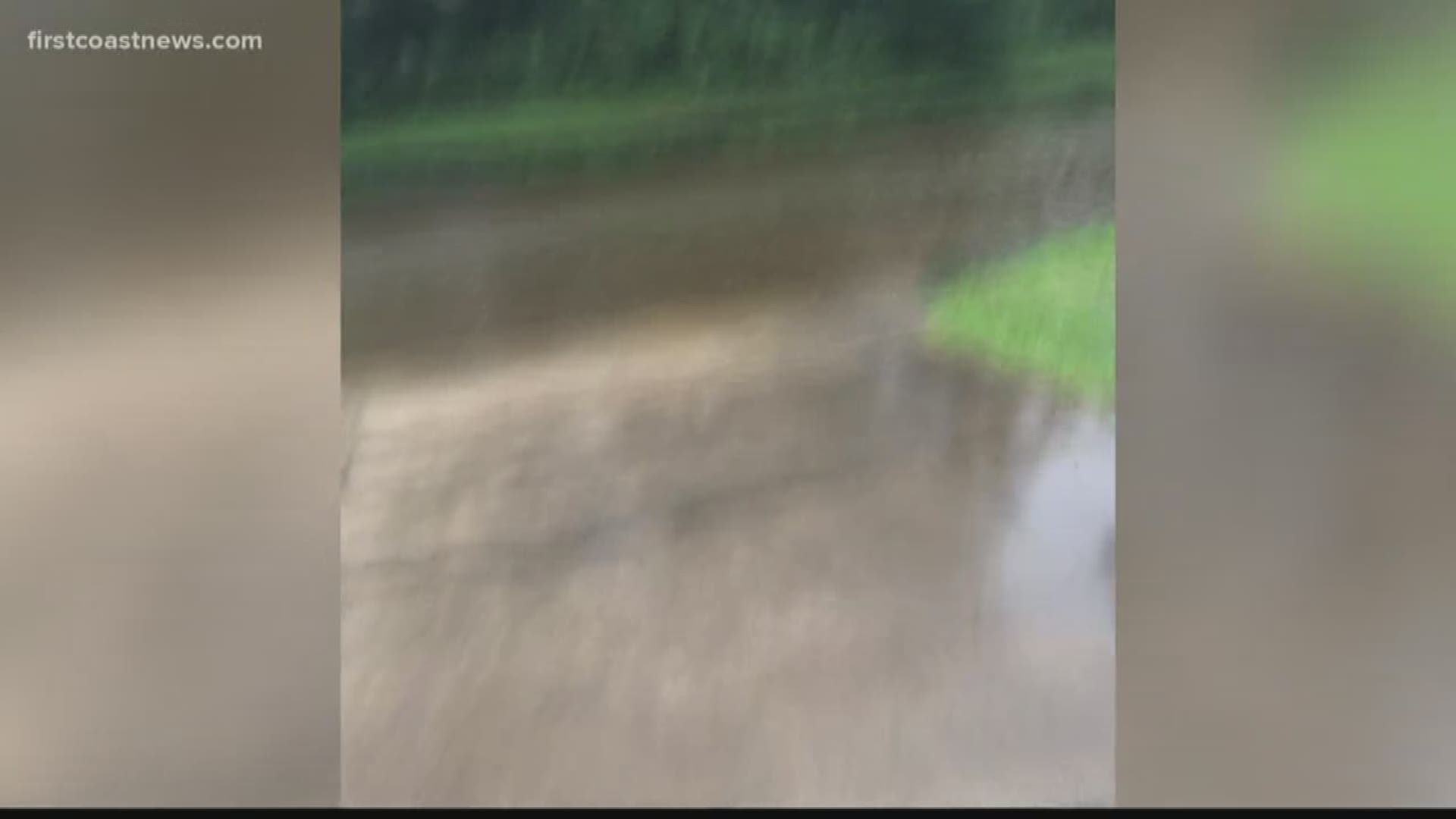ST. AUGUSTINE, Fla. – It’s several miles inland and about 30 feet above sea level, but people who live on Winton Circle say it’s been prone to chronic flooding for years.
“Over the last ten, twelve years it’s just gotten worse and worse,” said Pete Dorpema, a resident who lived nearly 20 years on the quiet cul-de-sac.
He said that according to past records, “there’s supposed to be pumping that gets it out of here, but it never got put in.”
Dorpema had to stretch his memory of when anything was considered.
“The County has done two studies that I know of,” he recalled. “The last was in 2006.”
Three full days after Alberto rolled through the area and most locales have dried out, at least excepting occasional showers. First Coast News used its own measuring tape, and parts of the asphalt of Winton Circle were six inches or deeper underwater.
“At least a foot if not more, in front of my house probably 18 inches at times,” Dorpema’s neighbor James Peacock said of the immersion as of Tuesday evening. Both men said some of the people on the street are forced to use four-wheelers to transport their kids to the bus stop on school mornings.
“We can’t drive a couple of our cars because you have to go through so much water,” Dorpema said.
Peacock has also lived on Winton a long time – 17 years, he said. “Every time it rains, the whole road’s underwater.”
He said the County has explained that the neighborhood suffers a unique ‘closed system,’ meaning that despite its apparently high-and-dry location, water has no way to drain. He’s also worried about further development nearby.
“They even told us that anything gets built, the water’s going to come in front of my house and my neighbor Jeremy’s house. It’s going to flood this area more,” Peacock said.
Although both Dorpema and Peacock are weary of so much flooding for so long, it’s affecting those looking forward as well.
“We’re going to start the buying situation … maybe,” said Stephanie Babineau, who’s been renting a home on Winton Circle for three months.
Why ‘maybe’?
“The flooding’s really bad,” she began. “My brother also lives with me and his car is very low to the ground. It would probably touch the floorboards.”
Her concern is amplified after hearing Peacock explain a problem with his car.
“Driving through these puddles on the block, the rug gets wet, so I had to pull the seat out to let the rugs dry,” he said, opening the door to his Volkswagen Jetta and showing the disarray inside.
But it’s far from a nuisance only, they say, also a threat to health and safety.
“Contamination from the horse farm,” Peacock said, motioning to an equestrian stable and riding area abutting some backyards.
“Horse poop, duck poop gets washed out in here, isn’t really healthy to be in.”
“Actually being seeing cottonmouths – the snakes – back in the woods over that way, by that retention pond,” he said. “And who knows what other contaminants are in that water.”
One neighbor’s son, said Peacock, also has a skin condition. “He has to wash it all off any time he goes in the water because the bacteria in there could affect him.”
The stories continue.
“Someone needed to go for cancer treatment after a storm, and he couldn’t get out because the flooding was so bad,” said Peacock.
For her part, Babineau is thinking of all that contamination.
“That just attracts more wildlife and snakes, and they’ve said the snakes are really bad around here,” she said. As she imagines putting down roots on swampy Winton Circle, she has her doubts.
“Kids are an issue. If I do have them, I don’t want them outside playing in nasty creek water.”
Although the County wasn’t available for interview or written statement, a spokesman acknowledged to First Coast News that the most recent study had, in fact, happened in 2006, but that an assessment was conducted after Hurricane Irma in September 2017. The County then applied for and received $180 thousand to begin an engineering and design plan. The County said its early estimate is that the plan would be complete about the end of 2018 and a fix might cost about $1.8 million, with funding to be determined.

